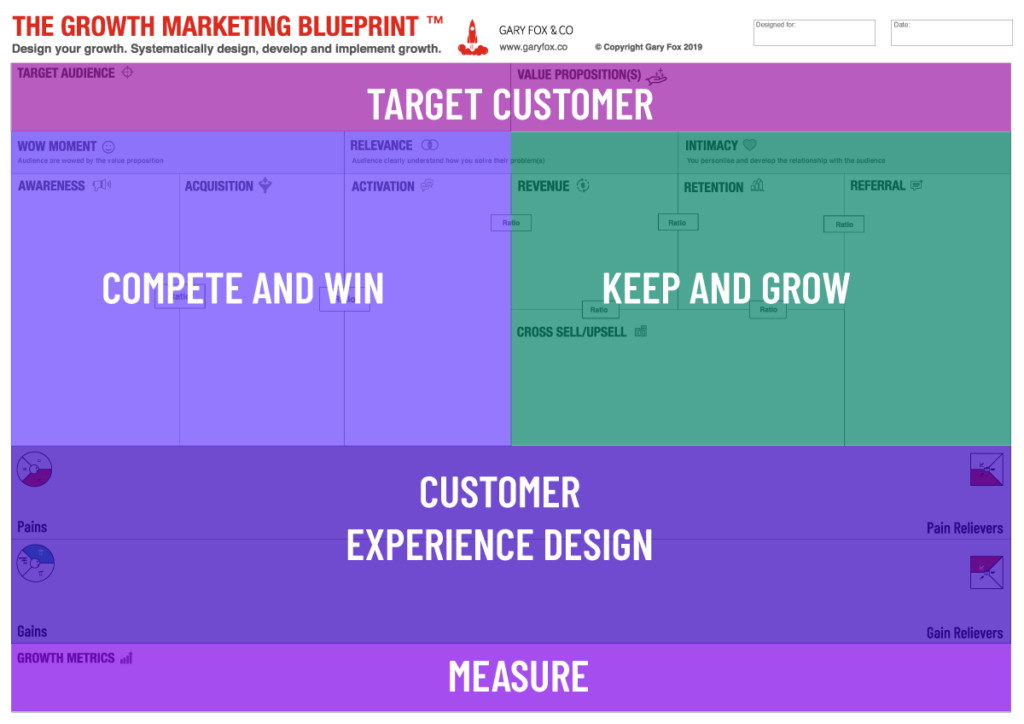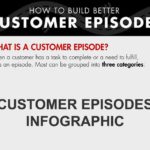In this guide, I will walk you through the Growth Marketing Canvas and how it will improve your marketing. I want you to learn how to use design thinking to transform how you plan for growth.
Growth is made up of lots of incremental changes that together yield the percentage change that most companies find hard to achieve. If you improve each of the six stages I guarantee that you will accelerate your growth. This is the Olympic way of growing your business – read more to understand how Olympic athletes use the same approach.
Growth Marketing Canvas – Background
The fate of British Cycling changed one day in 2003 when David Brailsford was hired to transform the performance of the British cycling team.
Marginal Gains – The Olympic Cycling Story
The fate of British Cycling changed one day in 2003 when David Brailsford was hired to transform the performance of the British cycling team.
Up until the 2012 Olympics, the British cycling team had only won a single Gold medal. Even worse, a British cyclist had never won the Tour de France in over 110 years.
That all changed though as Dave Brailsford began to systematically improve every part of the team’s performance.
Brailsford was committed to the pursuit of improving every aspect of both the bikes and the cyclists. He called this “the aggregation of marginal gains,”. This was his philosophy and approach to continually making small marginal improvements.
Brailsford and his coaches made small adjustments to everything, from the bike seats, tyres and even to shorts the cyclists wore. They changed from normal shorts to electrically heated over shorts to maintain ideal muscle temperature while riding.
From 2007 to 2017, British cyclists won 178 world championships and 66 Olympic or Paralympic gold medals and captured 5 Tour de France victories.
The upshot is that marginal gains work.
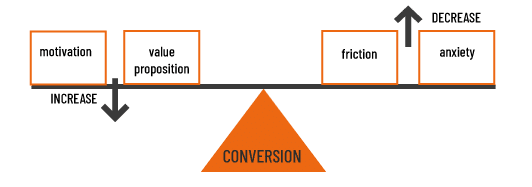
As marketers, we are trying to optimise our customer understanding, not conversions as such.
As an example, we might change some copy on a landing page and get an increase of 20%. The temptation then is to stop there and think it is the best we can achieve.
However, our tests aren’t to optimise the page, they are to learn more about the customer and so we need to continue experimenting. We might find another 20% increase. But if we do no more tests we’re leaving that extra 20% opportunity on the table.
In a world of saturated in masses of customer data, there is only one thing you need to worry about.
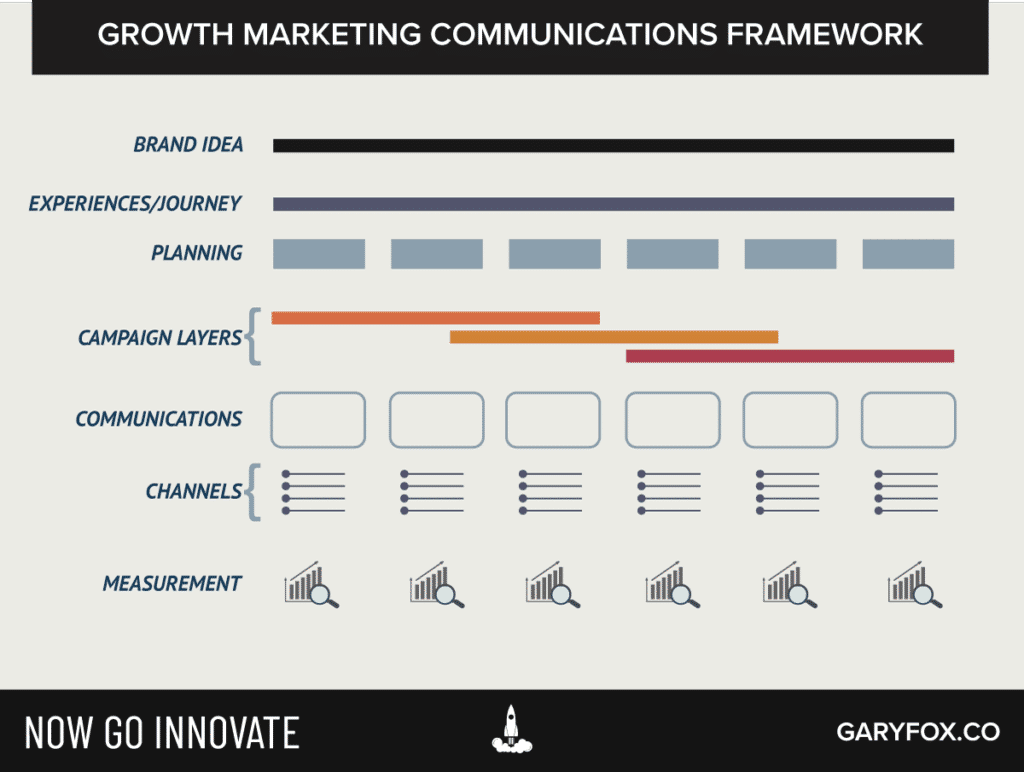
Iterative Testing That Achieves Cumulative Lifts In Results
The only data you need, is the data that helps you to predict customer behaviour.
Gary Fox
Growth Marketing Canvas: The Compound Effect
With an estimated net worth of $76 billion (that’s growing steadily), Warren Buffett is unquestionably one of the most successful investors in history.
Over his 52-year stint as CEO of Berkshire Hathaway, Buffett has earned nearly a two million per cent return on his investors’ money. To put that into perspective, if you invested $10,000 into Berkshire Hathaway in 1965, that investment would be worth $88 million today.
Most of us look at numbers of that size and assume they could come only from lottery winnings. However, Buffett took a different approach: Playing the long game with the seemingly simple technique of compound interest.
In finance, compound interest simply means that instead of taking out any earnings you make from interest, you leave it invested, effectively earning interest on interest.
Compound growth results from systematically optimizing every part of the funnel.
If you improve each part of the full-funnel (including referrals) then the net growth factor will be greater than the sum of the parts. It will snowball.
Sure, there will be obstacles to overcome. Things to figure out. But bit by bit you will rapidly change your growth dynamic.
Benefits of Using the Growth Marketing Canvas
First of all, I will give you a brief overview of what is growth marketing and why it differs from growth hacking. You’ve probably heard that buzzword a lot.
The top reasons to use the Growth Marketing Blueprint:
- Stop reacting to customers and instead actively shape the purchasing decision during the customer journey.
- Systematically increase the pace at which you grow – using lean and agile methods to rapidly iterate through experiments to optimize marketing throughout the funnel.
- Continuous improvement strategy – move from a static view of marketing to a continuous improvement approach where you continually make marginal gains.
- Design growth across the full funnel – refine and improve how you get, grow and keep more customers by learning where and how to focus your marketing spend.
- Discover new opportunities for growth – by mapping value to customer experiences and decision points, companies are discovering opportunities for new services and products.
1. WHAT IS GROWTH MARKETING?
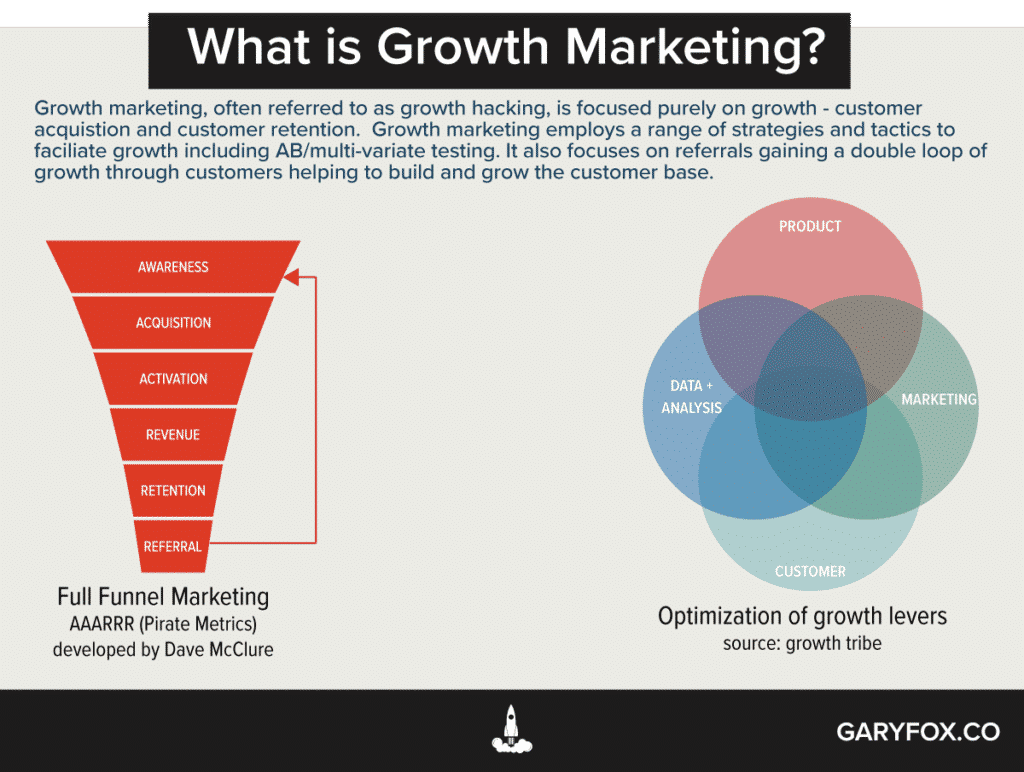
Growth marketing strategies are how you put together your plan and develop your customer experience based on your customer segmentation.
A growth strategy is aimed at winning and keeping customers better and faster than the competition.
There are five ways to grow your business:
- Get more customers (gain market share or target new segments)
- Sell more to customers (cross-sell/upsell)
- Retain customers longer (increase lifetime value)
- Increase the buying cycle (harder to do for most businesses)
- Create a new market/new customers – ref: Blue Ocean Strategy
Growth marketing = an insane focus on customers + adaptive marketing practices + a system to plan and optimize marketing.
The art of marketing is to systematically implement these growth strategies. Then optimize and scale to achieve rapid growth.
The growth marketing canvas focuses on understanding and optimizing conversion points.
Growth marketing is based on the following principles:
#1. Full Funnel marketing – AAARRR
#2. Lean startup experimentation – ideate, prioritize, test, learn
#3. Customer experience design – systematically design and develop customer experiences.
The growth marketing canvas helps you to plan and map experiences and critical conversion points.
2. Growth Marketing Canvas: Know Your Numbers
Optimizing each stage of the full-funnel is critical to growth.
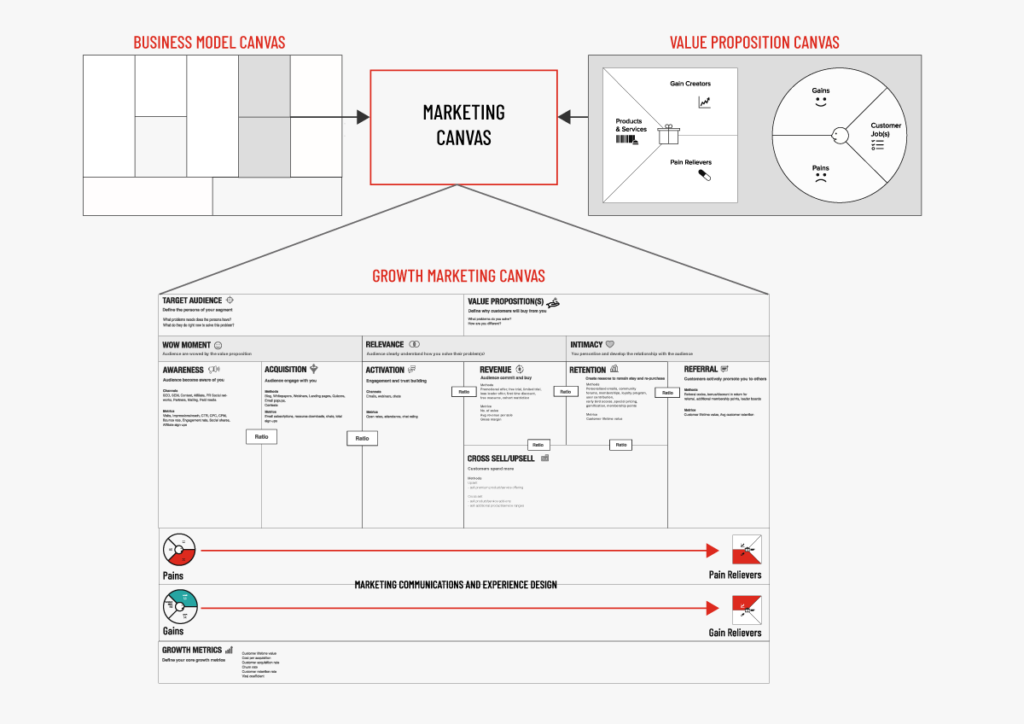
Understand where your bottlenecks are.
MOVE AWAY FROM JUST THE QUICK FIXES AND SEE THE WHOLE JOURNEY
Growth marketing is based on looking at the full customer lifecycle, not just the top part of the marketing funnel which is concerned with acquiring customers.
Marketing has had a laser focus on customer acquisition and historically been less interested in retention and referrals. That was left to customer services to deal with.
Separated customer departments impact performance. Because each department has different priorities, focus and fundamentally mental models of the business and customer. As a result, this leads to poor customer experiences, a lack of referrals, poor reviews, and ultimately impacts targets.
Regrettably, customer service is often seen as the poor cousin to sales and marketing. Rarely do two departments talk let alone integrate and share knowledge.
However, if you want rapid growth you need to recognise how to lower churn rates. Part of this comes down to marketing. If marketing acquires more customers who fit a loyal profile, then that can result in growth.
A customer experience focus brings everyone together. People from different departments see the whole picture and how they relate to driving growth. This is where the growth marketing canvas excels – you have to plan and understand how each part connects.
3. Growth Marketing Canvas: Full Funnel Marketing
AAARRR is something that you might expect a pirate to say. For this reason, the full funnel is often referred to as pirate metrics.
What are the pirate metrics? AAARRR stands for Awareness, Acquisition, Activation, Retention, Revenue, and Referral.
Each part has a unique set of measures that helps to understand the core metrics that drive growth. Furthermore, it helps spot bottlenecks.
Bottlenecks result in the overall growth performance dropping.
FULL FUNNEL AS A CUSTOMER JOURNEY
The Full Funnel was an adaptation of the traditional marketing funnel and places a greater deal more emphasis on the complete customer experience.
Although there are different interpretations, the principle fits nicely with the philosophy of adopting a customer-centred approach as an organization.
Of course, this creates challenges. Existing barriers between departments have to be broken down, systems put in place to get an integrated view of the customer and to implement growth.
Essentially, you have to design the full customer experience.
WHY USE THE AAARRR FRAMEWORK?
The AAARRR framework, also known as A3R3, makes it easy for people to understand the strategies, processes, and tasks for each section, as well as how they transition through to the next stage.
Digital technologies provide new ways to target, engage and capture customer data. Furthermore, they provide new ways to engage and develop relationships with customers.
Designing the customer experience first provides a framework for the marketing system you need to build. Your marketing stack needs to be capable of not only converting customers but also optimizing customer retention and referrals.
By using AAARRR on its own you can lose sight of how to achieve your growth goals and the how and why other departments and services need to be involved.
That is why the growth marketing blueprint works so well.
4. WHAT IS LEAN MARKETING?
The Lean Startup and Lean Methodology were made popular by Eric Ries. I recommend reading both The Lean Startup by Eric and his follow-up the follow-up book, The Startup Way.
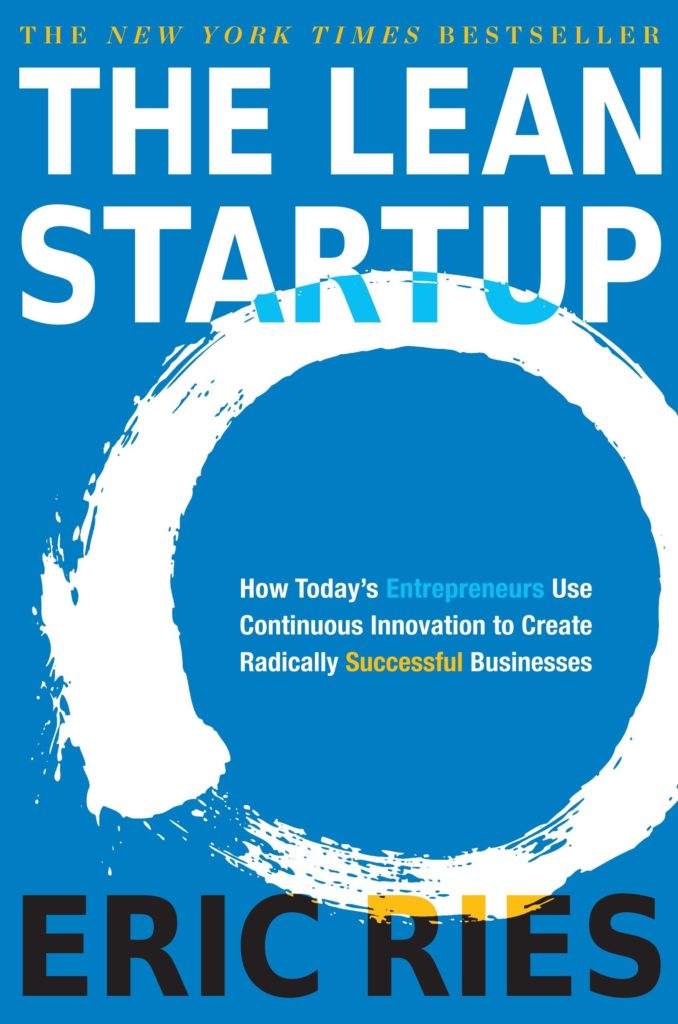
The lean methodology is about rapid experimentation, learning what works, ditching what doesn’t and a strong feedback loop to adapt service/product to fit the market.
Growth marketing also involves experimentation. For each experiment, you set a hypothesis and then devise an experiment to test it. With the result, you then ‘validate’ your hypothesis and optimize and/or conduct another experiment.
Essentially, marketing has become more dynamic as a result of digital platforms, integrations and hence how fast you can get access to results.
Another key point is that with content and channels you can now rapidly ‘pivot’. In other words, adapt and change tactics to optimize your ad spend.
NOTE: In growth marketing, you are not aiming to fill your funnel with any leads you want quality leads. The right fit. Quality leads result in higher conversion ratios, longer retention rates and more referrals.
In other words: Buy the highest quality impressions at the lowest price.
MARKETING TECHNOLOGY – CHANGING THE GAME
Marketing technology provides the backbone to accelerate growth.
But it is how you put your system together that counts.
With the right system, you can move from idea to implementation incredibly fast.
Many systems now should be using Artificial intelligence (AI). Why? Well, it transforms the process of experimenting and validating to a whole new level. Not only that, but AI introduces both heaps of personalization and automation opportunities.
Basically, digital decisions that you might take ages to make can now be made using algorithms. Algorithms deliver faster and superior results to humans in their decisions.
As an example, chatbots using AI, not only automate conversations but analyze results and offer more personalized paths for customers.
The ability to scale and personalize interactions with customers transforms customer experiences.
5. DESIGNING CUSTOMER EXPERIENCES
In my article How to use the Business Model Canvas, I talk about the unique way you can combine resources, e.g. partners, technology…, to create value for customers.
Today, companies need to not only only react to customers as they make purchasing decisions but also actively shape those decision journeys.
Customer experiences are unique as well. They are designed, or not!, and result in how a company interacts with customers along the full funnel.
Companies like Boston Consulting Group, McKinsey and Deloitte, all recommend that companies focus on the customer experience. Why?
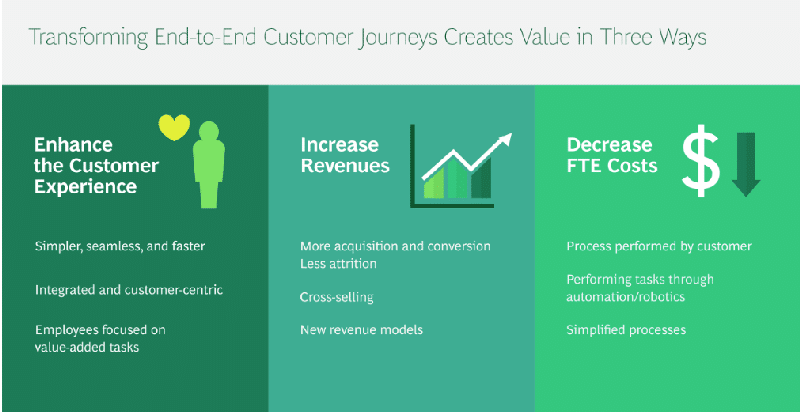
The customer experience helps capture and retain customers. Moreover, good customer experiences drive referrals and in turn growth.
The Growth Marketing Blueprint gives you powerful new ways to design experiences at each stage of the funnel. This results in a more coherent brand delivery and a remarkable increase in customers.
A focus on customer experience design delivers more conversions and improves customer retention.
6. THE GROWTH MARKETING CANVAS
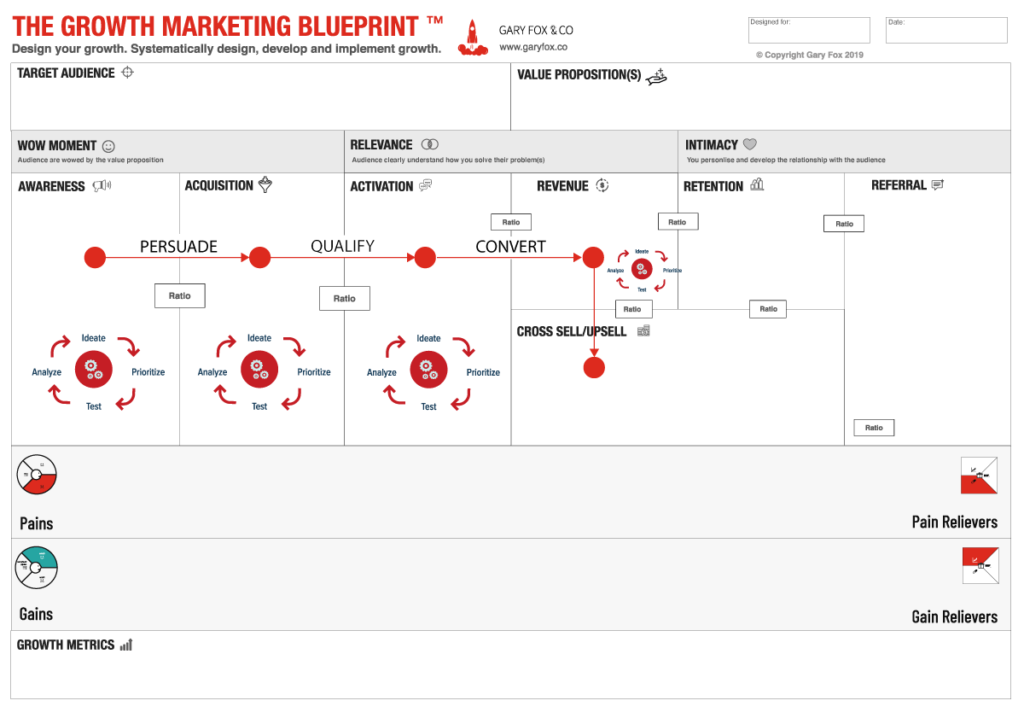
Growth Marketing Canvas is a canvas model inspired by the famous Business Model Canvas. It has been used with over 50 companies and progressively adapted.
Overall, there are eleven sections. The customer segments and value proposition are the basis for understanding the customer.
If you have already used and defined your customer segments and value propositions with the business model canvas you can transfer them here.
Detailed below is a full guide to the sections and in the Growth Marketing webinar, I will show you some examples as well as the growth hacking tactics and tools that can be used in the process.
7. WHAT FACTORS ENABLE GROWTH?
I’ve found that a company’s ability to trigger growth relies on four distinct but related capabilities:
- Automation streamlines journey steps. While automation of processes is highly technical, the focus is on enabling simple, useful, and increasingly engaging experiences.
- Personalization uses information about a customer—either based on past interactions or collected from external sources—to instantaneously customize the experience. This extends to personalizing and optimizing the next steps in a customer’s journey, such as immediately putting a valued traveller on an upgrade list.
- Context uses knowledge about where a customer is on a journey to deliver them to the next set of interactions.
- Journey innovation extends the interaction to new sources of value by mapping experiences to decision points. As a result, many companies are now recognising opportunities for new services and products. The best companies design journeys that enable open-ended testing to allow for constant prototyping of new services or features.
The Full Growth Marketing Canvas Guide
The full growth marketing canvas guide takes you through each part of the canvas and how to use it. You can download free high-quality printable versions from the guide page as well.
